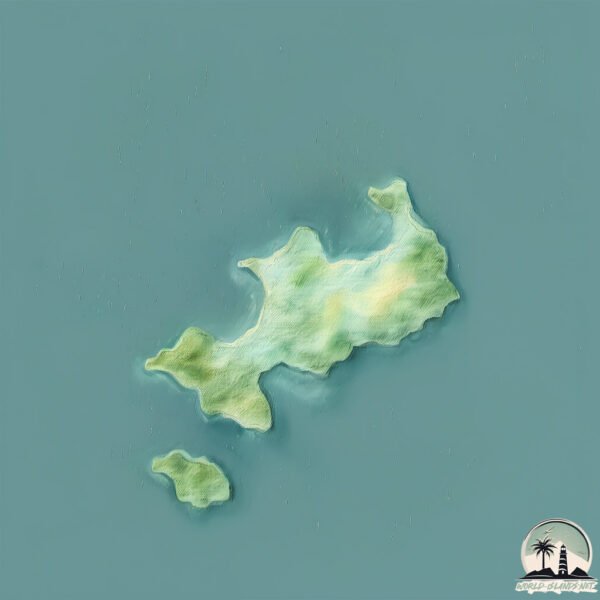Welcome to Saili , a Continental island in the Yellow Sea, part of the majestic Pacific Ocean. This guide offers a comprehensive overview of what makes Saili unique – from its geography and climate to its population, infrastructure, and beyond. Dive into the details:
Geography and size of Saili
Size: 1.599 km²Coastline: 9.3 kmOcean: Pacific OceanSea: Yellow SeaContinent: Asia
Saili is a Small Island spanning 1.6 km² with a coastline of 9.3 km.
Archipel: –
Tectonic Plate: Eurasia – One of the world’s largest tectonic plates, the Eurasian Plate covers a significant portion of Europe and Asia. It’s characterized by diverse geological features, including the Ural Mountains, the European Plain, and the Himalayas formed from its collision with the Indian Plate.
The geographic heart of the island is pinpointed at these coordinates:
Climate and weather of Saili
Climate Zone: ContinentalClimate Details: Monsoon-Influenced Hot-Summer Humid Continental ClimateTemperature: Hot Summer
Climate Characteristics: Hot summers with monsoon rains, contrasting with dry, cold winters. Typical of east Asian continental edges.
Topography and nature of Saili
Timezone: UTC+08:00Timezone places: Australia/PerthMax. Elevation: 18 m Mean Elevation: 12 mVegetation: Herbaceous CoverTree Coverage: 43%
The mean elevation is 12 m. The highest elevation on the island reaches approximately 18 meters above sea level. The island is characterized by Plains: Flat, low-lying lands characterized by a maximum elevation of up to 200 meters. On islands, plains are typically coastal lowlands or central flat areas.
Dominating Vegetation: Herbaceous Cover
Vegetation: 3 vegetation zones – Moderately Diverse Island
Infrastructure and Travelling to Saili
Does the island have a public airport? no .
Does the island have a major port? no .
The mean population of Saili is 1222 per km². Saili is Densely Populated. The island belongs to China .
Continuing your journey, Dachangshan Dao is the next notable island, situated merely km away.
11 | Sailing the Marquesas Islands, Nuku Hiva and Hiva Oa
We cruised our classic wooden sailboat Julia to many spectacular anchorages on Nuku Hiva and Hiva Oa. This is south pacific ...
11 | Sailing the Marquesas Islands, Nuku Hiva and Hiva Oa
We cruised our classic wooden sailboat Julia to many spectacular ...
We cruised our classic wooden sailboat Julia to many spectacular anchorages on Nuku Hiva and Hiva Oa. This is south pacific ...
Flotilla Sailing in the Ionian Islands of Greece
Highlights of the Ionian Islands, and what you can expect sailing in ...
Highlights of the Ionian Islands, and what you can expect sailing in this beautiful area of Greece, with Sailing Holidays Ltd.
12 | Sailing to Fatu Hiva, the Most Beautiful Island in the World
Our wildest cruising dreams have been realized as we sail our wooden ...
Our wildest cruising dreams have been realized as we sail our wooden Ingrid Ketch to the Bay of Virgins in Fatu Hiva.
China is classified as Emerging region: BRIC: Brazil, Russia, India, and China – Economies noted for their rapid growth and increasing influence on global affairs. The level of income is Upper middle income.
News – Latest Updates and Headlines from Saili
Stay informed with the most recent news and important headlines from Saili. Here’s a roundup of the latest developments.
Loading...
Please note: The data used here has been primarily extracted from satellite readings. Deviations from exact values may occur, particularly regarding the height of elevations and population density. Land area and coastline measurements refer to average values at mean high tide.

